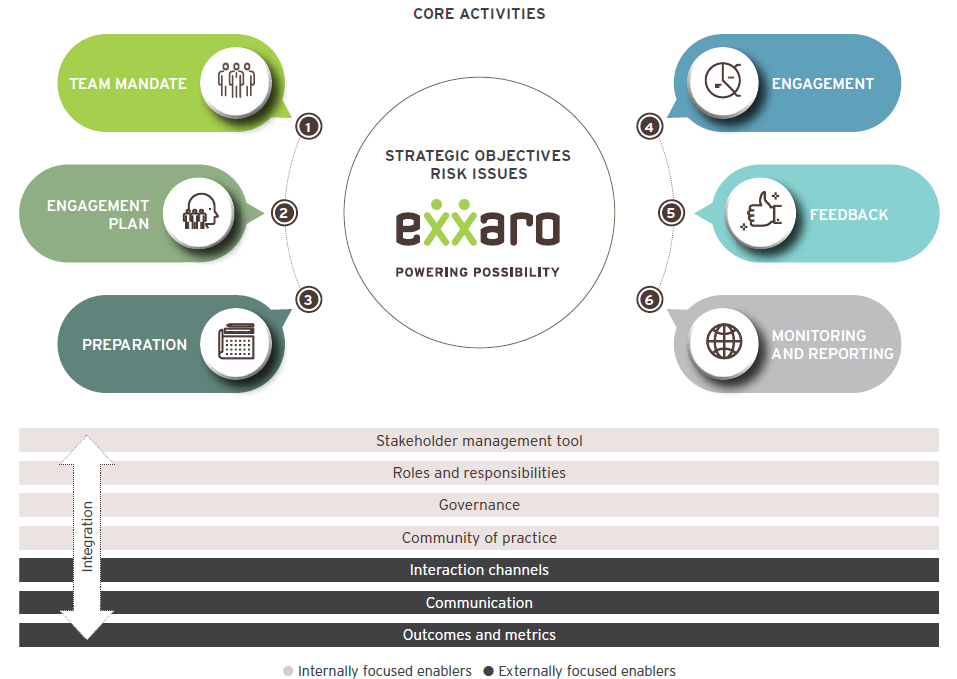Integrated report 2019

Exxaro creates value in social and economic development through good corporate citizenship and stakeholder relationships, as well as alignment with the principles of the UNGC, employee relations, labour and employment matters, B-BBEE, equity, prevention of unfair discrimination, ethics, anti-bribery and anti-corruption, and many more human capital concerns
Exxaro's stakeholder ecosystem comprises a broad range of stakeholders.

The nature and quality of relationships with key stakeholders are vital as value is not created by or within an organisation alone but through relationships with others. Engaging meaningfully with our stakeholders helps Exxaro to: 
Exxaro's approach to stakeholder management is informed by the AccountAbility 1000 stakeholder engagement standard as well as the key account management (KAM) model. Internally, it is referred to as the KAM approach to stakeholder management.
The stakeholder relationship maturity model refers to five stages of process and tool usage by an organisation in the management of stakeholder relationships. In the first, "ad hoc" stage, there is little use of process. At the "procedural" level, there is more consistent use of processes and greater use of tools. At the "relational" level, management recognises the usefulness of stakeholder management for competitor analysis and fully functional tools are applied. At the "integrated" stage, there is full use of stakeholder management methods and tools and comprehensive reporting on stakeholder engagement and outcomes. At the final, "predictive" level, stakeholder management is used for health checks and predictive risk management.
The KAM value chain is based on the premise of continuously building and improving the quality of stakeholder relationships through proactive and intentional stakeholder engagement during the ordinary course of business and during crises or discourse. It is designed to ensure that relationships with stakeholders are purpose-driven and helps to move Exxaro along the maturity continuum towards predictive stakeholder risk management and proactive strategy management. We are thus able to meet overall stakeholder management objectives. The model has been rolled out at the business units and is currently being rolled out at head office.
